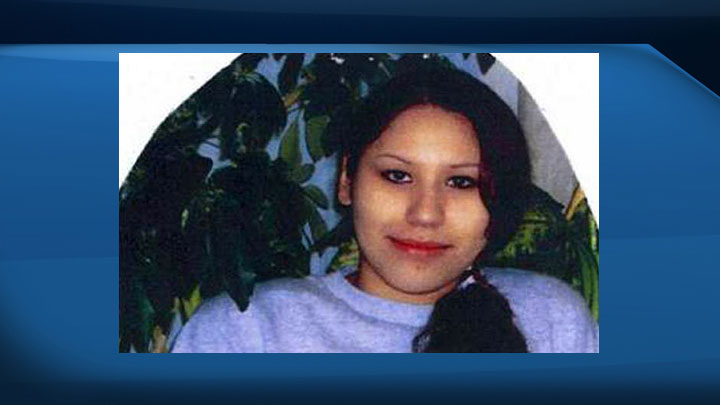SASKATOON – A missing persons case has evolved into a homicide. Karina Wolfe’s last known location was about seven blocks from downtown Saskatoon.

More than five years after her disappearance, police found her body only a 15 minute drive from there.
“I am grateful that she was returned home so family can lay her to rest,” said Carol Wolfe, Karina’s mother.
Her daughter went missing in 2010 – she was 20 years old. Carol said she last saw her daughter leaving the house: “The last memory I have is Karina saying, ‘I love you mom and I will be home later.'”
But that never happened.
Family and friends held yearly rallies and vigils, yearning for a reunion – that tragically never came to fruition. In mid-November, Saskatoon Police located Wolfe’s remains in the city’s north-west.
I always expected her to come home and I always prayed for her to come home.
“I always expected her to come home and I always prayed for her to come home,” said Amber-Lee Quewezance, a friend of Karina Wolfe’s.
Quewezance said she met Wolfe years before her disappearance when they were both 17.
“She was always just so happy. She always had a smile on her face. She never had anything bad to say about anybody,” said Quewezance.

Get daily National news
Wolfe’s tragic death is another example of what so many call Canada’s epidemic of missing and murdered aboriginal women.
“It’s scary, you know, that there’s so many of them going missing and not a lot of them are found until years later and some of them still aren’t even found,” Quewezance said.
First Nations leaders have continuously called for a national inquiry into the issue. Prime Minister Justin Trudeau pledged to undertake the challenge as part of his election platform.
Statistics Canada found Saskatchewan aboriginals were roughly five times more likely to be homicide victims in 2014 than non-aboriginals.
“The numbers are now there from Stats Canada and I think we as society, we need to respond to that,” said Myrna Laplante, co-chair of Women Walking Together, a group that advocates for missing and murdered awareness.
she says an inquiry could help form a plan of action to combat the trend.
It’s a call echoed by Canada’s Truth and Reconciliation Commission, which unveiled 94 recommendations focused on overcoming the effects of residential schools, including a national inquiry.
“The reality is, is that the past has shaped our present and it’s going to shape the future so we need to understand the past,” said Robert Henry, a University of Saskatchewan Indigenous studies professor.
He added that the TRC recommendations could be pivotal in lowering the aboriginal homicide rate if they’re taken seriously: “Not just saying we’re going to do it for face sake, but actually understanding the importance of what this will actually do.”
As Aboriginal leaders wait for Ottawa’s next steps, Karina Wolfe’s family has started down the road to justice.
Wolfe’s accused killer, 33-year-old Jerry Constant, voluntarily led police to her remains in mid-November.
“Jerry provided investigators with a possible location of Karina Wolfe and provided police a story of what happened to Karina,” said Staff Sgt. Tyson Lavallee with the Saskatoon Police.
Constant faces charges of second degree murder and offering an indignity to human remains.
Police don’t believe the two knew each other before Karina went missing, but won’t offer more details.
“Because this is before the courts, I think his story is best relayed through the court process,” Lavallee said.
Wolfe’s family and friends packed the courtroom for his first appearance and got a glimpse of the man accused in her murder.
Amber-Lee Quewezance said she’ll honour her late friend by being in court as much as she can: “And I really hope that justice is served for her and not only for her, but for other missing and murdered aboriginal women as well.”
with Files from Global News’ Joel Senick








Comments